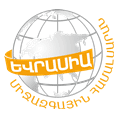Universities in Armenia

Eurasia International University
Yerevan, Armenia
Eurasia International University is a leading private higher educational institution in Armenia. Established in 1996, it has since been dedicated to the mission of providing high quality education that stands in line with the developments of the modern society. In 2004 EIU transitioned to the European Credit Transfer System, which made the instruction compatible with the European Higher Education Area Standards and Bologna Agreement.
Instruction at EIU is organized through a balance of theory and practice within an innovative interdisciplinary framework. The well-established culture of... See full description.
Universities in Armenia by City:
YerevanAbout universities in Armenia
Prior to gaining its independence in 1991, Armenia was a small part of vast empires – first the Ottoman Empire, and later the Soviet Union – and very few native institutions were born or flourished during this time. For a country only 20 years old, Armenia has taken significant strides toward modernizing its education system, but much work remains to be done. The system suffered extensively during the economic crises of the 1990s, which crippled the government and damaged all government-funded programs, including education. Shortly after Armenia gained its independence from the Soviet Union, an economic recession, instability, and conflict with neighboring Azerbaijan culminated in a near-complete collapse of the government, and the after-effects of this crisis continue to define the challenges that remain to be overcome. Lack of funding for higher education has been a consistent problem for the Armenian government, which recognizes the importance of higher education but struggles to raise sufficient funds for the investments that are needed.
The most efficient and cost-effective investment that can be made in Armenia’s higher education system over the next few years, according to education experts, is to increase coordination among universities, global research institutions, and the private sector. Armenia’s education system, like many others in under-developed countries around the world, lacks relevance to the needs of the marketplace, and thus students have trouble seeing the advantages they can gain from a college education. Encouraging university administrators to communicate with one another and with their counterparts in the worlds of business and civil service carries almost no out-of-pocket cost, but has huge benefits in terms of the efficiency of the system.
Nearly all of Armenia’s top colleges and universities are located in the capital city, Yerevan. There are a few well-respected institutions in other major cities such as Gavar and Gyumri, but the overwhelming majority are concentrated in the single city of Yerevan. In some ways, this is an advantage: it provides a center of gravity for intellectual and scientific pursuits, and obviates the need for extensive infrastructural extension and maintenance in far-flung provinces. It also provides opportunities for cooperation between different institutions, although such projects are not undertaken as often as might be hoped. In addition, since Yerevan is home to over 30% of the Armenian population, it is not a bad idea to focus educational resources on the most dense population center in the country.
The extreme concentration of top colleges and universities in Yerevan also carries problems. Most notably, it prevents people in other cities and provinces from finding opportunities for higher education, or forces them to opt for less reputable or less well-funded programs than their peers in Yerevan. Given the time that it takes to found a university, keep it alive with funding until it can become self-sustaining, and allow it to develop a reputation, it is likely that this situation will persist for the foreseeable future.
The most efficient and cost-effective investment that can be made in Armenia’s higher education system over the next few years, according to education experts, is to increase coordination among universities, global research institutions, and the private sector. Armenia’s education system, like many others in under-developed countries around the world, lacks relevance to the needs of the marketplace, and thus students have trouble seeing the advantages they can gain from a college education. Encouraging university administrators to communicate with one another and with their counterparts in the worlds of business and civil service carries almost no out-of-pocket cost, but has huge benefits in terms of the efficiency of the system.
Nearly all of Armenia’s top colleges and universities are located in the capital city, Yerevan. There are a few well-respected institutions in other major cities such as Gavar and Gyumri, but the overwhelming majority are concentrated in the single city of Yerevan. In some ways, this is an advantage: it provides a center of gravity for intellectual and scientific pursuits, and obviates the need for extensive infrastructural extension and maintenance in far-flung provinces. It also provides opportunities for cooperation between different institutions, although such projects are not undertaken as often as might be hoped. In addition, since Yerevan is home to over 30% of the Armenian population, it is not a bad idea to focus educational resources on the most dense population center in the country.
The extreme concentration of top colleges and universities in Yerevan also carries problems. Most notably, it prevents people in other cities and provinces from finding opportunities for higher education, or forces them to opt for less reputable or less well-funded programs than their peers in Yerevan. Given the time that it takes to found a university, keep it alive with funding until it can become self-sustaining, and allow it to develop a reputation, it is likely that this situation will persist for the foreseeable future.

